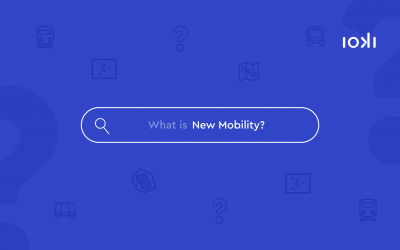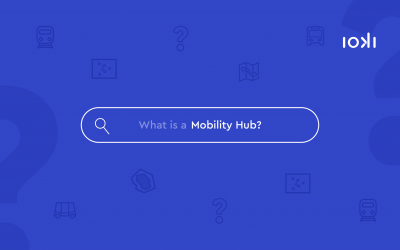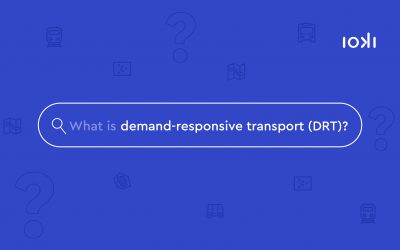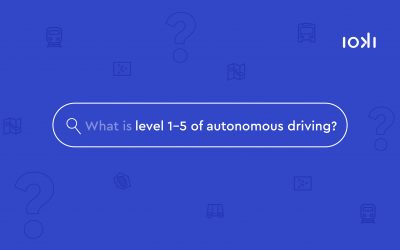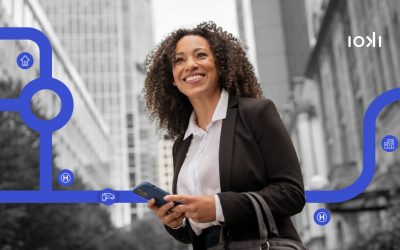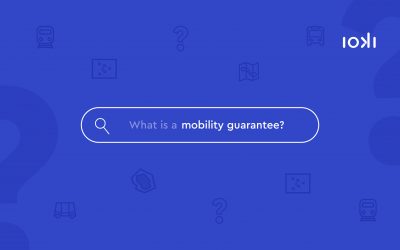“New Mobility” is often referred to as “smart mobility” and is a collective term for many innovations relating to technology and mobility. These new mobility services combine digitalisation with traditional mobility and use the advantages of the internet. New mobility services include bike sharing, demand-responsive transport, ride hailing and smart parking.
Senior-friendly public transport: What should age-appropriate public transport look like?
Europe’s population is ageing. in 2019, more than a fifth (20.3 per cent) of the EU-27 population was at least 65 years old. And the trend is still rising. Demographic change is a challenge for public transport, but it can also be an opportunity for growth with a customised mobility offer for senior citizens. After all, if older people no longer drive, they are increasingly dependent on public transport in order to continue to actively participate in social life.
Perspectives from Mackenzie Banker
Smart mobility solutions use technology and innovation to improve mobility for everyone. Similarly, Smart Cities use innovative concepts and technological advancements to improve life in urban spaces. Both enable us to achieve the vision of more human-oriented and efficient places in cities.
Mobility Turn now! Mobility of the future in Brandenburg
In this edition of the blog series “Mobility turn now!”, we are focusing on the largest of Germany’s eastern federal states relating to area: Brandenburg. In addition to the Spreewald cucumbers and unspoilt nature, Brandenburg has a lot to offer in terms of new mobility and Smart Cities.
What is … a Mobility Hub?
Mobility Hubs, also known as Mobility stations, are publicly accessible locations where various modes of transport and sharing services converge. These can be S-Bahn (suburban train) and subway stations in an urban context, or even a bus stop in the countryside where rental bikes are available or important bus routes intersect. At these stations, people can easily switch from one mode of transport to another. Mobility hubs promote efficient and sustainable mobility by offering various mobility services, otherwise known as Mobility-as-a-Service (MaaS). The concept can be expanded from a simple bus stop to large Mobility Hubs, for example, with a combination of on-demand transport, car sharing stations, or e-scooters.
What is … demand-responsive transport (DRT)?
Demand-responsive Transport (DRT) refers to a technology-based and shared mobility service. Instead of following predefined routes, timetables and fixed stops, on-demand services follow no timetable, also make virtual stops and operate on different routes. The vehicles operate on demand and when needed. Booking is usually done via app but can also be done via phone call and/or in the web browser. DRT combines the reliability of conventional public transport with the flexible availability of private cars.
Mobility Turn, now! Mobility of the Future in Hamburg
This time we’re off to the far north, or more precisely to the Hanseatic City of Hamburg. The port metropolis on the Elbe is a pioneer in Germany for digital, climate-friendly and flexible mobility.
Mobility on holiday – first & last mile in tourist regions
Holidays without mobility are only possible on staycations, because no matter whether it’s a day trip, an annual holiday or a long-term trip: Travelling means being mobile. In order to achieve the climate protection goals and to advance the traffic turnaround, tourist traffic should also be critically examined, because Germans like to travel a lot.
Autonomous vehicles: turning point in European regional and local transport
Autonomous mobility is no longer a utopia; it is already reality and a key technology in today’s world. Worldwide, and especially in Europe, research and testing are being carried out on autonomous mobility – this holds great potential in terms of improving individual mobility thanks to increasingly efficient services while also providing a way of reducing private transport.
What is … level 1-5 of autonomous driving?
Autonomous driving has been considered one of the major trends in the mobility industry for years. According to a representative survey conducted by the digital association Bitkom in 2021, 99.8 percent of respondents can imagine using an autonomous means of transport*. But what does it actually mean when car manufacturers send the first systems for highly automated driving on the road at level 3 and level 4 autonomous shuttles reinforce public transport in Germany on demand from 2023 onwards?
Corporate Mobility in 2023: flexible solutions instead of classic company transport or company cars
For a long time, the company car was considered the non-plus-ultra and was often the only mobility offer employees could expect from their employer. In 2023, more flexible mobility solutions such as digital demand-responsive company transport, job bikes and mobility budgets are gaining ground. Rising energy prices, stricter environmental and climate protection regulations as well as greater sustainability awareness among employees are also contributing to the need for companies to rethink their corporate mobility management.
What is… a mobility guarantee?
A mobility guarantee is
Newest article
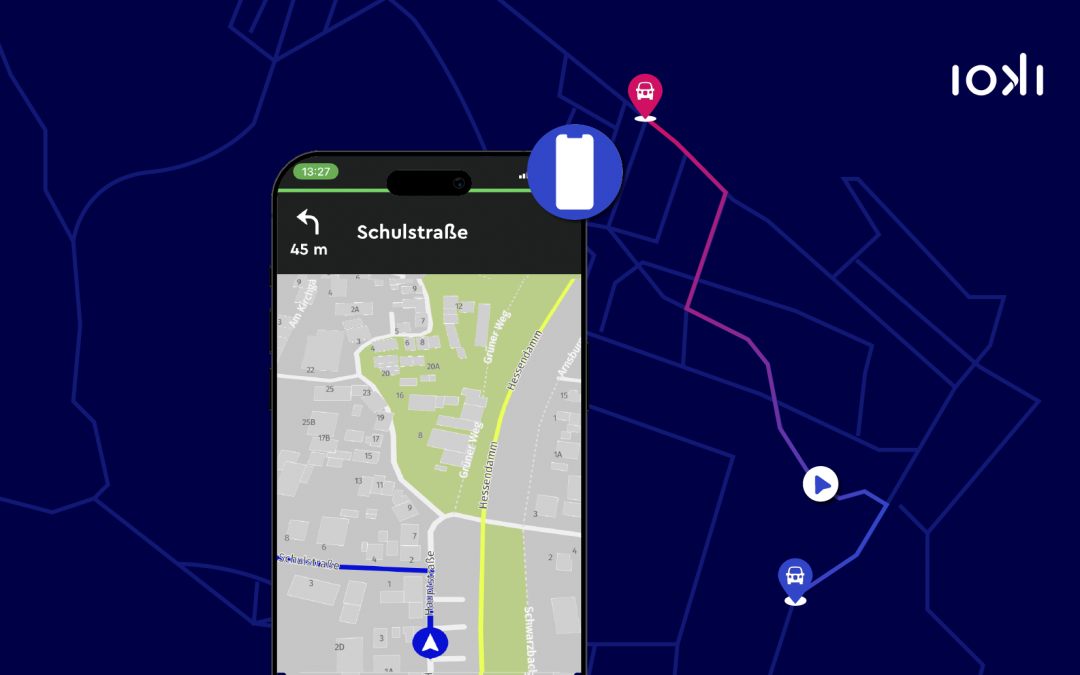
Easy on the road with the ioki Vehicle App: an insight into the navigational app for demand-responsive transport
The ioki Vehicle App is an important part of the ioki Platform alongside the ioki Passenger App and the ioki Operator. It has been specially developed to ensure the smoothest possible journey for drivers, a comfortable journey for passengers and efficient operations for transport companies.
Currently, the implementation of on-demand transport is often associated with a high level of bureaucracy and paperwork. This is eliminated by using the ioki Platform and the app.

